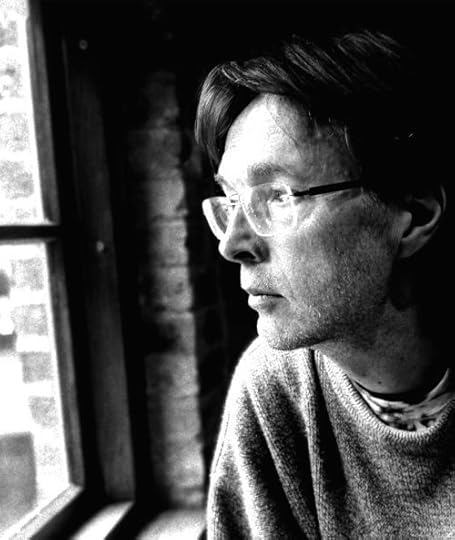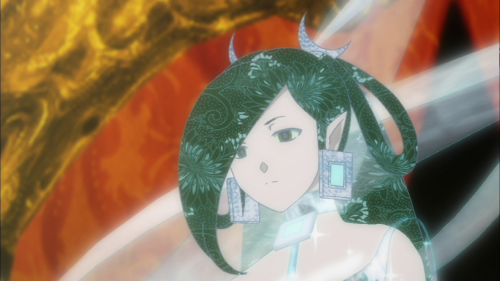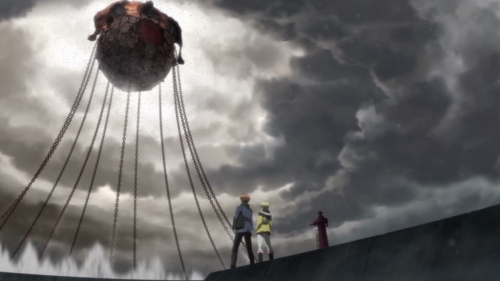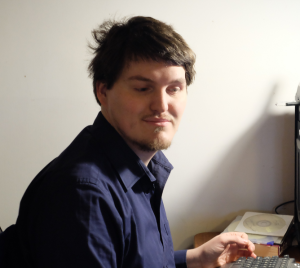Sarah Ash's Blog
November 1, 2024
Music, Musicians, and The Wolf and the Wild King – K.V. Johansen
I seem to write about musicians a lot. Moth and Mikki and Deyandara in the Gods of the Caravan Road series, Rookfeather in the Torrie books, Thomas Smith Gorev and his band in Love/Rock/Compost, Eleanor in Treason in Eswy, and the various minstrels and harpers in The Serpent Bride, a collection of short stories based on medieval Danish ballads, are all singers and storytellers in one form or another. Most of them, too, are wanderers. It’s an idea that has always had a lot of imaginative appeal for me. In The Wolf and the Wild King, one of the two main characters, Lannesk, though a warrior and an outlaw on the run, is at heart a harper and a singer, despite having lost his voice following a brutal injury when he was a boy. The other main character, Mairran, troubled son, assassin and executioner in service to the nameless and undying Queen, spends what time he can steal for it with an olive-wood flute, chasing an elusive music with which he can’t quite get to grips, but which he feels some need to understand. Another central character is the Wild King, who was once a mortal Singer; his harp and his song are a part of his magic and the means whereby he and the Grey Hunter bound the dragon Erryth the Golden beneath the Lake in the legendary past. There are other characters — Singers, to use the Forest term for the bards trained in the history and lore of the Forest lands, and mere Outlander minstrels — for whom music is central, and nearly everyone will take a turn with the harp and a song around the fire on a winter’s night.
Stories and song, poetry and music, are more closely related, historically, than we often remember. The story itself might be a poem, structured by alliteration or rhyme (Beowulf in Old English and the Middle English Alliterative and Stanzaic Mortes, for instance, or the ballads that people went on singing from medieval times right on into the era of the folklorists of the nineteenth century and the folk musicians of the twentieth) or it might include smaller verses, songs, or riddles cast in verse. Think of how many fairy tales, even ones in translation, include some scrap of rhyme. “Name me name me not, my name is Tom Tit Tot …” or “Mirror, mirror on the wall …”. Tolkien in particular brought this mode of telling a story, the main narrative woven through with poetry and song, into the modern (or Modern) novel of the twentieth century. Until the advent of good sound recording and reproduction, say the mid-twentieth century, people sang and recited and made music themselves much more than we do now, and when writing about a culture lacking that technology, we tend to forget how common a part of life singing, reciting, and the making of music was. Though I have always written characters who are musicians and poets, in The Wolf and the Wild King, for all that it is a story well-filled with battle, ambush, desperate deeds in the dark and, to use Buchan’s phrase, “Escapes and Hurried Journeys,” I wanted to show that presence of music and poetry as something more ubiquitous, an everyday part of life, not only an art purveyed by those who make it the centre of their lives and their means of earning their bread. I had in mind the story of Cædmon, the servant at the abbey of Whitby in the seventh century, who, lacking skill in music and poetry, never took part when the others were passing around the harp and making verses in the evening; he mourned for this lack in himself. An angelic visitation gives him the gift, either of talent or confidence; he composes a hymn in Old English and is able to join in the singing and music-making thereafter with his fellows; more importantly, he becomes, through Bede’s recording of the story, a demonstration that the vernacular can be used for divine purposes and thus to write holy things in Old English rather than Latin is an acceptable act. It was not the Cædmon story’s elevation of the vernacular to a language fit for sacred use (and thereby worthy of being written down), but the frame of his story, the everyday pastime of the unlettered servants of the abbey passing around a harp and jamming, making music and poetry together, that I wanted to carry into this new book, showing a culture where music is something everyone is likely to take part in, not only as a listener, but by playing an instrument, reciting a tale, or partaking in communal dancing and ballad-singing.
On another level, when writing about a culture not dominated by the written word, the musician and oral poet can stand in for the writer and for those who, like them, use words as their tools of making. They can convey something of what the act of writing means for the writer. Words and music have the power to shape a thought, to give birth to an emotion, to sway an intent. Words and music are powerful. Words and music are magic. In The Wolf and the Wild King, the characters I write about as musicians are those who can make music and songs out of, you might think, nothing — creating on the fly a song or a spell. This skill comes out of long study of the making of music and the recitation of songs and lays, for the Singers who have served their three- or the greater seven-year apprenticeship; for those, like Lannesk, who have not followed that path of dedicated study, the making is nonetheless a skill grown out of a talent, an affinity for the art, honed by long practise and use, by listening, by learning to understand what is heard. The magic in the world (at least the magic within human grasp that is not a Forest-blessing inherent from birth), is the same; it is not a magic of formulae and rules, but like a talent for music, is something perhaps innate in some people, but which can be developed and trained to some degree even in someone who has no obvious talent. It will always run stronger in someone already disposed that way, someone with a good ear and the passion (and opportunity) to devote themselves to it. Lannesk, outlaw warrior though he is, was born to make music, and in the loss of his voice, his skill with the Forest-harp becomes one of the most vital ways he has to examine his own feelings and to share fellowship with his companions (even when it means playing that one wretched ballad yet again for someone who insists on singing off-key). Mairran is haunted by something he cannot get to grips with; he tries to shape it in music, not with any notable success, but still he hears it and tries to give it form. Lannesk’s music, all untrained, turns to magic when he shapes it to serve that need, a defence against the dragon-kin sorcerers, a weapon with which he can fight the working of their spells, which themselves are shaped and given power by song and sacrifice. The Wild King himself makes magic with harp and song great enough to bind a dragon — for a time.
Those harps, by the way, are not the Celtic harp that many of you are probably picturing. That’s a later instrument. The harp of Cædmon, in Old English, hearpe, and in Old Norse, harpa, is now called a lyre, because later musicologists decided to take the Greek lyre as the defining word for instruments with a frame and strings parallel to the soundboard; they relegated “harp” to ones with a frame where the strings are perpendicular to it. The Northern/Germanic/Anglo-Saxon lyre, though is a harp — the harp, in fact. That’s the instrument that the word originally meant; that’s what Cædmon played; that’s the instrument played by the Wild King, and by Lannesk, when he can get his hands on one. Even Mairran, though his preferred instrument is the flute (i.e. the recorder, not a transverse flute) can take a turn at the harp when it’s being passed around of an evening.
Whatever the instrument played, that longing to have words, to have notes and chords of power to make music out of nothing and to shape the world, is a powerful emotion in Lannesk and also in Mairran, who wants nothing more out of it than to grapple with his own elusive understanding of himself. Maybe this was born out of my own yearning to be able to play with the freedom I attribute to Lannesk. I’m a dogged, technical guitar player. I began playing when I was nine and so have been playing classical guitar most of my life (taking to electric guitar and bass more recently), but still, after all these years, I can no more pick up a guitar and have spontaneous music spill out of it or me than I can fly. I would liken it to flying, in fact. When I get too glum about that failure, I remind myself that I may be no musician, but I write novels in vast worlds spanning many characters and cultures and times and I weave them all together across a series without an outline, throwing threads in the air and catching them to weave back in three books later — and they fly. And the words I write sing. So I do magic too — just not with a guitar. (Unlike Cædmon, or Tolkien, I haven’t quite summoned up the courage to write poetry for Lannesk or the Wild King to give you, only scraps that are more an impressionistic paraphrase than any kind of verse.) There is magic in words well-set; even in prose, there can be music.
An afterword on northern lyres:
You can look at some beautiful northern lyre reproductions on the website of luthier Michael J. King; I think the Trossingen lyre is my favourite. If you read German, the German Wikipedia has a very good, detailed article on it. There are also quite a few recordings and videos of various reproductions played by various musicians online. I am, in fact, struggling with the urge to try to build one myself. (As research, of course.) You can even buy a book of sheet music for the northern lyre, Norþhærpe: How to Play Anglo-Saxon, Viking & Germanic Lyres, by Paul Wilding (isbn: 9798784254818).
My website page about The Wolf and the Wild King
Purchase links for the ebook — links to buy the paperback edition aren’t available yet.
Links for further reading on the northern lyre, i.e., the forest-harps of The Wolf and the Wild King, as well as some videos:
Anglo-Saxon lyres Michael J. King
K.V. Johansen is the author of the five-book epic fantasy series Gods of the Caravan Road, beginning with the Sunburst-shortlisted Blackdog, as well as a number of books for children and teens and two works on the history of children’s fantasy literature. She has an M.A. from the Centre for Medieval Studies at the University of Toronto and is a member of the SFWA and the Writers’ Union of Canada. Various of her books have been translated into French, Macedonian, and Danish. As Kris Jamison, she is the author of the novel Love/Rock/Compost. Her website can be found at www.kvj.ca and she is on BlueSky as @kvjohansen. She lives in New Brunswick, Canada.







October 31, 2024
The Wolf and the Wild King is the first volume of K.V. Jo...
The Wolf and the Wild King is the first volume of K.V. Johansen’s new fantasy duology and it comes out in mid-November. Drop by the Guest Blog on November 1st to find out more about the new novel and read some fascinating facts and insights about early music from the author herself in: Music, Musicians, and The Wolf and the Wild King !
Please Feel Free to Share:





August 1, 2024
Second Volumes – Perils, Pleasures and Pitfalls
So, here we are. Invited back by Sarah Ash (many thanks) to write a second post for her to commemorate the release of the next book in The Cluster Cycle. Since I chose the topic last time, I asked her to provide one.
For anyone who had read my previous guest post, the concept for The Cluster Cycle was retellings of old stories in a sci-fi setting with a modern twist. Compared to the previous post about Starborn Vendetta, which lingered far more on my inspirations, this one (based on the suggestion of Sarah Ash) focuses on the problem that stared me in the face when a series was accepted and I had to write four more novels in the same world. A problem loosely defined as ‘Oh flipping heck, what the flip do I do now?!’. The second book, Lost Station Circé, is the result of what is probably a very relatable conundrum.
Second volumes, or sequels, or follow-ups or whatever you choose to call them, are very easy to mess up. The stories of the sequel being worse than the original are numerous, so much so it’s become a cliché. To highlight one anime, take the original second season of Black Butler. While not completely terrible, its original story didn’t sit well with a lot of fans and is generally seen as subpar (the amount of fan service that just comes off as uncomfortable given characters’ ages doesn’t help). There is also the Marvel Cinematic Universe, which has the dual problem of wildly varying quality, and a continuous narrative across over thirty films and multiple television series plus extras. It was the kind of thing I didn’t want to happen, as it puts me off not just a series, but off characters that I might otherwise like.
I was faced with these issues, and decided to take an interesting way out. A unique quality of writing fiction is that it gives you unlimited license for hopping about within a timeline, so I skipped forward several centuries from the events of Starborn Vendetta. I also focused on a different class of people; rather than rulers and nobility, Lost Station Circé focuses on the ragtag crew of a cargo ship on the edges of the Cluster. While there are connections to be found, and some explicit character references/cameos I won’t spoil, I decided this series would be one where readers could truly jump in anywhere. Challenging? Yes, but lots of fun.
A second pleasure was the two works I chose as inspiration, Robert Louis Stevenson’s Treasure Island and Homer’s The Odyssey. Stevenson’s old adventure had been a childhood favourite, and The Odyssey introduced me to the world of Greek folklore and mythology…alongside Disney’s Hercules. As before, some character names are references to the original (Solet, Circé, Livesey, Benbow), but not as many. And mapping out their personal journeys, based around the theme of restitution, was huge fun both in the original writing and the edits.
But what about the biggest pitfall? There were two. One was based around how to make the story stand out. Looking back, I feel that Starborn Vendetta is perhaps a little too faithful to the works that inspired it, so while my original concept leaned pretty close to Treasure Island in structure, and to a point still does, I felt it needed a unique identity to help it stand out and really push the series forward. I also realised I hadn’t full communicated something that admittedly hadn’t solidified fully when writing the first one: nearly all humans within the Cluster are meant to be non-white peoples. This is a tricky thing to handle, and it’s an ongoing process, but it felt right for this universe that the stereotypical European white face has become rarefied or even extinct by this point in history.
I hope this hasn’t been a terrible drag on you, dear reader. It’s still strange being a published writer. Probably something I’ll never get used to. But, like the Benbow, one can but set out and see what the future holds.
Please Feel Free to Share:






February 24, 2024
Fiction To Nonfiction: Stephen Palmer visits the Guest Blog to talk about taking his writing in a new direction
Moving from fiction to nonfiction was a move I hadn’t expected to make.
The rate of change in the publishing scene is accelerating, with trad publishers becoming ever more risk averse, celebrities colonising our world, while authors, funnily enough, don’t get to colonise theirs, and that level playing field created by the rise of self-publishing in the digital world now so immense nobody can hear what anybody else is saying. Our cultural world is saturated with novels.
I felt depressed and disillusioned when I faced the prospect of not having a publisher for my SF and Steampunk novels. Me and Keith had a fabulous trip. But chance, more chance, imagination, and the fact that I’m nothing if not an author demanded a response once those melancholic feelings faded. That response was I Am Taurus.
Chance? A random encounter with a book by science author Jo Marchant, in which I learned for the first time about Bull No. 18 in Lascaux. More chance? The long, hot summer of 2022, and my summer break. Imagination? Putting together the inspiration I found on the first page of Marchant’s book with stuff already floating around my mind, stuff accumulated over decades of reading around prehistory and anthropology. And I just am an author…. like so many writers of prose, it’s in my blood.
What I hadn’t appreciated until later was that the brief book I’d penned was still storytelling. I’d imagined that narrative nonfiction was somehow different from fiction, that the latter was storytelling and the former facts. Now, facts interest me because the world interests me, but nobody can work with facts alone. We human beings live culturally and socially via stories. I realised, as I edited and honed my prose, that I had told a story, albeit one stretched over nineteen thousand years. It was no work of fiction, except perhaps that ten percent of embellishment and speculation, yet it was telling a proper story.
I knew then that I had remained a storyteller. It was just that I was working in a different mode. That realisation gave me hope, that people might support my new work by publishing or buying it, that I was not mortally wounded by losing my fiction base, and that there was a new path leading forwards which I could follow.
I’ve often said in workshops or handing out advice in other spheres that the difference between an author and a writer is that the former never gives up. You have to have superhuman powers of persistence in this business. You have to knock on every door and follow up every single lead. It’s exhausting, but it’s critical to success.
And my new path has forked already. A chance post on Facebook led me to a certain Mr Burrows, and then the opportunity to write a book on punk rock. So I’m going to be relating another amazing story, using all the powers of creativity at my disposal. This is another narrative nonfiction tale close to my heart. And telling this story has been enormous fun so far. Moreover, the publisher is a good, established one, and they’re going to pay me money.
Take that, depression! Feck off, disillusionment!
Stephen Palmer
Publisher’s Blurb for I Am Taurus (23.2.2024)The constellation we know as Taurus goes all the way back to cave paintings of aurochs at Lascaux. In I Am Taurus, author Stephen Palmer traces the story of the bull in the sky, starting from that point 19,000 years ago – a journey through the history of what has become known as the sacred bull. Each of the eleven sections is written from the perspective of the mythical Taurus, from the beginning at Lascaux to Mesopotamia, Ancient Egypt, Greece, Spain and elsewhere. This is not just a history of the bull but also an attempt to see ourselves through the eyes of the bull, illustrating our pre-literate use of myth, how the advent of writing and the urban revolution changed our view of ourselves, and how even the most modern of rituals – bullfighting in Spain – is a variation on the ancient sacrifice of the sacred bull.

Stephen Palmer is the author of twenty genre works: Memory Seed (Orbit 1996), Glass (Orbit 1997), Flowercrash (Wildside 2002), Muezzinland (Wildside 2003), Hallucinating (Wildside 2004) and The Rat And The Serpent (Prime Books 2005). In 2010 PS Publishing published the far-future Urbis Morpheos. In 2014 Infinity Plus Books published his surreal slipstream steampunk novel Hairy London, and in 2015 his Beautiful Intelligence and short novel No Grave For A Fox. In 2016, Infinity Plus published his alternate-world steampunk Factory Girl trilogy; The Girl With Two Souls / The Girl With One Friend / The Girl With No Soul, with another alternate historical work, Tommy Catkins, out in summer 2018. In 2019 IP published a return to themes of AI, The Autist. Following the relaunch of the Factory Girl trilogy later in 2019 with new Tom Brown covers, IP published a fourth work in the same world, The Conscientious Objector. Woodland Revolution, a mythic prose-poem, came out in 2020. At the end of 2021 his steampunk Conjuror Girl trilogy was published. His short stories have been published by Wildside Press, Spectrum SF, Newcon Press, Infinity Plus, Mutation Press, Eibonvale Press, Solaris, TFQ, Unspoken Water, Doghorn Publishing, Kraxon, Tickety Boo Press, The Manchester Speculative Fiction Group, Boo Books, Wayward Plants, Woodbridge Press and PS Publishing. In 2019, Newcon Press published a collection of short stories, Tales From The Spired Inn, set in the world of Memory Seed. His first non-fiction book on Tangerine Dream came out in 2021.
Stephen lives and works in Shropshire, UK.
Please Feel Free to Share:





February 23, 2024
Stephen Palmer returns to the Guest Blog…
I’m delighted to welcome Stephen Palmer back to the Guest Blog tomorrow (February 24th) and to learn more about his fascinating new non-fiction book I Am Taurus (out today)!
Please Feel Free to Share:





November 13, 2023
The Retelling Retold – Thomas Wrightson visits the Guest Blog
Since storytelling began, humans have retold and reworked tales. Moral messages, personal fantasies, whimsical tales, life lessons, histories, all have been put through the lens of the storyteller for uncountable generations. But why? Because of this ubiquity, the retelling can be overused. To me, the retellings that stand out the most are ones which take an old story and give it a proper new spin, make it relevant to a modern audience or even decontextualize the story as a whole.
There are too many retellings to cover in one article, from Beowulf (c. 700+) to Journey to the West (Chala-hey-cha—wait, what was I saying?). So we’ll focus on the three old stories that inspired my debut novel: The Count of Monte Cristo, the work of William Shakespeare, and the legend of Faust as popularised by Christopher Marlowe and Johann Wolfgang von Goethe.
Beginning with the seminal revenge tale penned by Alexandre Dumas and Auguste Maquet’s seminal revenge tale, it has undeniable appeal for the creative writer. The original has adventure, suspense, scandal, romance, and a moral message. Its speculative retellings tend to be grouped into either relatively faithful recreations in new settings (Gankutsuou, Lang Ya Bang/Nirvana in Fire), original tales that draw heavy inspiration from it (The Stars My Destination, A Fire Born of Exile, Scavenge the Stars), and small nods in otherwise original tales (too many). It’s telling that ‘Monte Cristo’ has become shorthand for long-term calculated revenge.
Several alterations are found in most retellings. Though the core is left intact. The protagonist is often changed to a woman, opening up gender-based topics. The pace is increased, and the cast cut down in size. Finally, and most frequently today, the revenge is shown in an ambiguous moral light, a topic only partly addressed in the original story. Revenge is no longer seen as noble in many Western countries, and in fiction is predominantly portrayed in an at-least ambiguous way. The price is heavy, and innocents will be caught up in events.

Moving onto Shakespeare, a topic with whole areas of scholarship devoted to it, needing barely an introduction. Not surprising when he was a master of reworking stories himself. Works inspired by him are beyond reasonable counting, and range from prosaic and tragic (Joe MacBeth) to fantastic and funny (Wyrd Sisters). For the sake of sanity and brevity, only two examples will be discussed in any detail.
The first, and a personal favourite, is the anime/manga Zetsuen no Tempest. A fantasy shonen telling of a magical civil war and the machinations of two ancient trees, the storyline blends elements from multiple Shakespeare plays into a narrative that plays with parallel themes of love, betrayal and self-discovery alongside a subversion of many established shonen tropes. Flipping to science fiction, the movie Forbidden Planet makes liberal use of an initial set-up strongly reminiscent of The Tempest, and plays with parallel themes of the use of power, and civilization versus savagery. Whether intentional or not, the similarity is there.

For Faust, there is a deeper tradition to draw on, going back at least to Theophilus of Adana that has someone selling their immortal soul for a boon. There is a distinct difference between the two main sources for the modern tradition; Marlowe’s Doctor Faustus features a discontented sorcerer willingly selling his soul for power, while Goethe’s two-part Faust uses a more morally complex man fallen to ennui and ultimately saved through selfless repentance. This early inconsistency is still present and ongoing in fiction.
The perspectives jump about all over the place from the condemnatory (The Devil and Tom Walker, Berserk), or the morally ambivalent (Black Butler, The Picture of Dorian Gray), to the sympathetic (Puella Magi Madoka Magica) or comedic (Bedazzled). Some stories play with the audience as to the veracity of events (Angel Heart). Faust can even feature in person (Grave Importance, Knights Contract). There’s no solidity in portrayals, because a deal with some supernatural other is so ubiquitous and varies from telling to telling. Especially when dealing with the popular if inaccurate knowledge of pre-Christian versus Christian doctrines. One commonality is that the specific ‘deal with the devil’ is generally restricted to fantasy and horror, with other genres using it more as window dressing or allusion over direct retelling.
Now for the bit where I talk Starborn Vendetta, the novel inspired by these old tales. It started after I watched Gankutsuou, a surprisingly faithful sci-fi anime retelling of Monte Cristo. As Mahiro Maeda did for Gankutsuou, I took the basic set-up, and removed then-expected themes of redemption and forgiveness which seemed at odds with the overall narrative as read today. Not every character has an analogue, and the cast is smaller, but there is a strong undercurrent where Dumas’s and Maquet’s reflections can be seen.
I drew on two other works, Macbeth and Goethe’s Faust, to provide more muscle and sinew to the Monte Cristo skeleton. Macbeth provided several character names, and a deeper familial drama surrounding the Vorn-Solari family. Faust contributes another character archetype, and the key element of a bargain struck with a Mephistophelian figure that the protagonist schemes to escape from.
Several characters in the story are named after figures from the books (Mercedes, Gaspard, Ali, Gretchen, Duncan, Andréa, Hydee). But as I wrote, the story became something more, a retelling of those narratives for a world I’d lived in and through. The internet age, 9/11 and the War on Terror, the Trump administration, the shifting politics of Russia and China, and later COVID-19. When Starborn Vendetta was accepted and the publisher wanted a series, I built on that theme. Old stories retold for a new audience inspired by current world events. Well, current for the years 2019 to 2021.
This is just scratching the surface of these topics, but for now we must return to the point of this article. There are a number of reasons why stories are rewritten, but I can think of one that’s very compelling; commonality.
Revenge stories give a catharsis in a world bound by rules for the sake of the common people, and Dumas and Maquet provided an ideal template. The tragedies and comedies of Shakespeare reveal many universal wants and needs that haven’t gone away in the modern world. And who wouldn’t be slightly tempted by the kind of bargain Faust was offered? It’s likely that someone somewhere shares virtues and faults with another, and for many there are three very common factors people cope with every day; temptation, love or hate, and the wish for payback.
A final thing is that when talking about retellings, writers seldom think of them as what they are classified by the publisher or the reading public. Starborn Vendetta is classified as space opera, but I had difficulty thinking of it as that, given my preconceptions about that genre. To me, it’s still rooted in its origin as a melding of three old tales.

Author bio
Thomas Wrightson is a British genre author living on Ynys Mon in the top left-hand corner of Wales. Fascinated with creating stories since childhood, and writing them down since his teenage years, he has long searched out the best voices in fantasy and science fiction across the world.
His 2023 debut, Starborn Vendetta, is the first in a space opera pentalogy dubbed The Cluster Cycle. The premise is simple: old stories, whether Monte Cristo or Golden Age detective novels, reworked for a sci-fi premise and modern problems. He also maintains a blog for articles and short stories, and has a podcast dubbed ‘Author Talks’ featuring ruminations on various topics and short story readings.
For more information, visit Thomas Wrightson’s website.
Please Feel Free to Share:





November 12, 2023
Thomas Wrightson Visits the Guest Blog!
The next visitor to the Guest Blog this autumn is Thomas Wrightson who is celebrating the publication of his debut SF novel: Starborn Vendetta and has some fascinating insights to share into the works that inspired him – as well as looking at the theme of tales retold.
Make sure to drop by the website on November 13th to read Thomas’s article and find out more about his novel.
Please Feel Free to Share:





October 30, 2023
Myth-making has never stopped and that can be useful
I’ve described The Green Man’s Heir and subsequent books as modern fantasy rooted in the ancient myths and folklore of the British Isles. The artwork for The Green Man’s Quarry, will tell readers this latest novel draws on myths and folklore ancient and modern. The more I’ve explored traditional tales, the more I see collective unconscious story creation continues to this day.
The term ‘urban myth’ appeared in the 1960s, but discussion of ‘urban legends’ goes back to at least the 1920s. The OED cites the term’s first appearance in Vanity Fair, 1931. Some modern myths can be tied to earlier versions of the same tale, updated to make them more convincing. Ghostly highwaymen are replaced by phantom hitch-hikers. A legend in the Cotswolds where I live features a spectral Morris Minor on a road where a headless coachman once whipped his horses.
These stories are remarkably persistent, and spread far and wide even before the Internet. As a teenager in 1970s Dorset, I heard the horrifying tale of a young couple whose car broke down on a lonely New Forest road. He went for help, and she fell asleep. She was woken by rhythmic thudding on the car roof. She saw armed police surrounding the vehicle. A man with a loud-hailer told her to get out and walk towards him and not to look behind her… That echo of a story element going right back to Orpheus is obvious. Of course, she looks and – I’ll be interested to learn who knows how this story ends, when they first heard it and where.
I came across this exact same myth in the 1990s. I was volunteering at a local primary school, working with reluctant readers. A lad was clearly distracted in our one-on-one session, so I asked what was bothering him. He said he’d heard something horrible. A young couple’s car broke down on a lonely road in Otmoor… I stopped him and finished the story, guessing correctly the hospital referenced would be in Littlemore not New Milton. When these stories shift to a new location, place names change. He was aghast. If I knew, it must have happened. Not at all. I explained this was an urban myth. I’m pleased to say this reassured him. Better yet, I learned later via the staffroom that he’d been debunking the story in the playground. Teachers were pleased because this had been upsetting a lot of children. Modern myths can be far from benign. I’m still curious to know how widespread this story is, and if anyone can point me towards a possible origin.
Some modern folklore can be traced back to popular fiction. The Angel of Mons is a famous example, where Arthur Machen’s short story The Bowmen, published in September 1914, swiftly took on a life of its own. In his story, British soldiers on the verge of defeat on the Western Front are saved by the ghosts of archers who won the battle of Agincourt. Variations on the tale and other instances of supernatural intervention in the dreadful battles of the Great War soon followed, recounted as authentic fact. I have heard anecdotally that something similar happened among aviators, after Frederick Forsyth’s 1975 novella The Shepherd was published. That’s the tale of a lost Cold War pilot guided back to his airbase by a WWII Mosquito.
The Internet has seen a surge in misinformation of all kinds, and this quickly gets tangled up with modern myth-making. The Slender Man originated on an Internet forum thread and very rapidly went viral with lasting and violent real-world consequences. In an insidious example this past month on social media, I saw Neil Gaiman refuting the claim in an online article that his inspiration for Coraline had been a widespread urban myth from Hampshire UK. Allegedly, children exploring a burned-out mansion came across the body of a baby in a cot with buttons on its eyes… Another echo of Greek myth there, though I don’t know what Charon would do with buttons.
Neil states very clearly that he’s never heard of this story. I believe that, and not merely because I trust him. I strongly suspect the 1969 book/1972 film/2021 TV movie The Amazing Mr Blunden is the source for much of this scenario. I’ve also checked with family contacts who lived, taught and went to school in Hampshire. They’ve never encountered this allegedly well-known local legend.
Does this have any relevance beyond discussions of folklore? I think so, because misinformation and deliberate disinformation is an increasing problem for us all. If a lie could get around the world before the truth had got its boots on, in the days of print journalism, it can do that in the blink of an eye online. People can be far too willing to believe what they want to be believe. That has always been the case, as politicians have known for centuries, going back to the ancient Greeks yet again. However, the reach and persistence of deliberate lies has increased exponentially. At the same time, education which prioritises teaching to a test downplays critical thinking skills. Talking about modern myths, uncovering their origins and their lack of factual evidence, can be a non-confrontational way to prompt people to ask themselves if they’re being told the truth elsewhere.
On a lighter note, modern myths can give writers ideas as readily as ancient legends. Sightings of and belief in The Beast of Bodmin (and other places with names beginning with B) offered me far too many possibilities to pass up, especially once I started looking further back for related folklore.

Juliet E McKenna is a British fantasy author living in the Cotswolds, UK. Loving history, myth and other worlds since she first learned to read, she has written fifteen epic fantasy novels so far. Her debut, The Thief’s Gamble, began The Tales of Einarinn in 1999, followed by The Aldabreshin Compass sequence, The Chronicles of the Lescari Revolution, and The Hadrumal Crisis trilogy. The Green Man’s Heir was her first modern fantasy inspired by British folklore in 2018, and The Green Man’s Quarry in 2023 is the sixth title in this ongoing series.
Her 2023 novel The Cleaving is a female-centred retelling of the story of King Arthur, while her shorter stories include forays into dark fantasy, steampunk and science fiction. She promotes SF&Fantasy by reviewing, by blogging on book trade issues, attending conventions and teaching creative writing. As J M Alvey, she has written historical murder mysteries set in ancient Greece.
For more, visit www.julietemckenna.com
Please Feel Free to Share:






October 29, 2023
Juliet E. McKenna Returns to the Guest Blog
‘I’ve described The Green Man’s Heir and subsequent books as modern fantasy rooted in the ancient myths and folklore of the British Isles.’ Juliet E. McKenna in her fascinating article for the Guest Blog about the distant origins of the urban myths and legends that we still tell each other today.
To celebrate The Green Man’s Quarry, the sixth (and most recent) volume in her popular Green Man series from Wizard’s Tower Press, Juliet will be looking into myth-making from tomorrow (October 30th) here!
Please Feel Free to Share:






July 29, 2023
20 Years After…
Can it really be twenty years since the first book of The Tears of Artamon was published? Amazon reminds me that it was my first novel to be published in the States (thanks to my editor Anne Groell) and thanks to the wonderful cover by Stephen Youll in those pre-social media days when there was no such thing as a cover reveal, online blog tour and online book bloggers were only just beginning to appear. Goodreads was yet to appear (it launched in 2007) and writers were very much dependent on word-of-mouth (rather than word of BookTok or BookTube) and the kindness of booksellers and magazine reviewers. And, of course, no Kindle or digital editions.
This first novel was originally entitled Drakhaoul but I was asked by my editor to provide a different title that wouldn’t cause potential readers to scratch their heads and wonder how to pronounce it!
So, Happy Birthday to the people of The Tears of Artamon – and I hope that more readers will spend time with them in the next twenty years or so…
Please Feel Free to Share:








